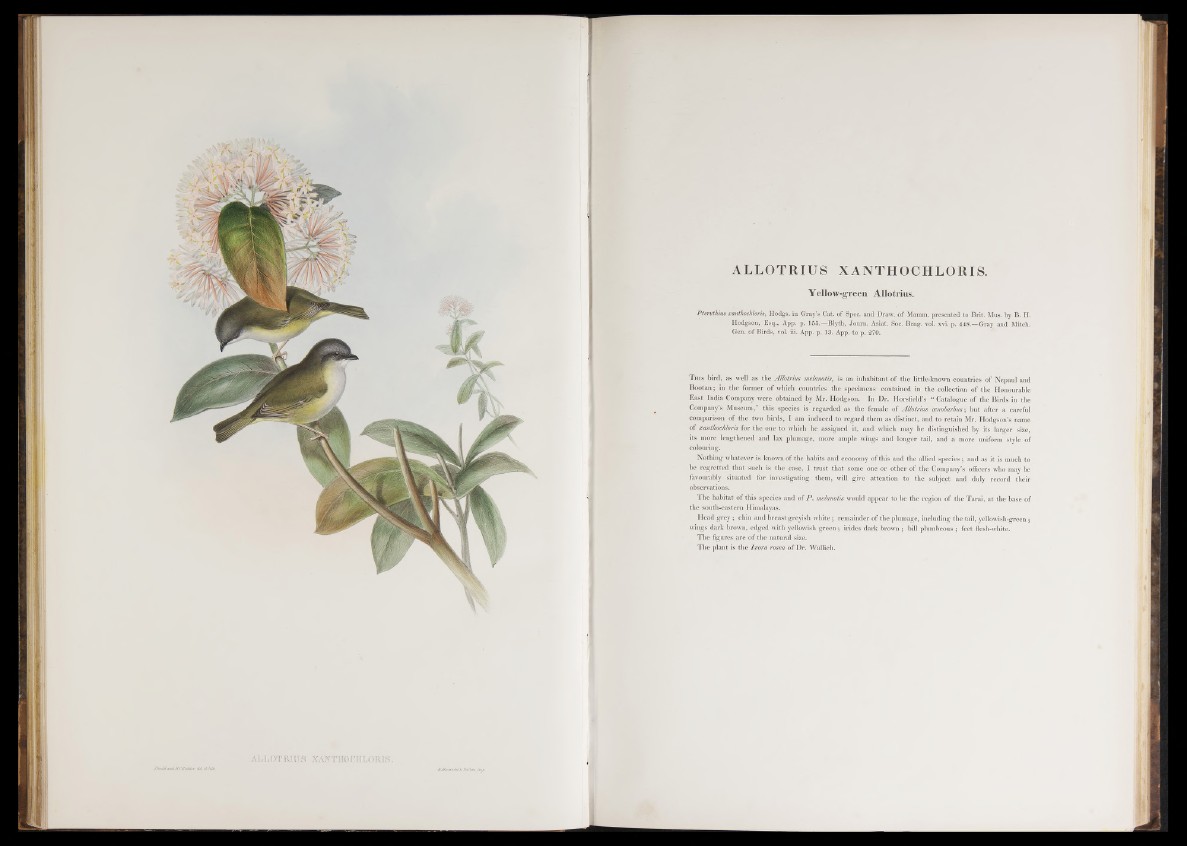
ATLLOTNUS XAFTHOCELORIS.
ALLOTRIUS XANTHOCH LORIS.
Yellow-green Allotrius.
Pteruthius xanthochloris, Hodgs. in Gray’s Cat. of Spec, and Draw, of Mamm. presented to Brit. Mus. by B. H.
Hodgson, Esq., App. p. 165.—Blyth, Journ. Asiat. Soc. Beng. vol. xvi. p. 448.—Gray and Mitch.
Gen. of Birds, vol. iii. App. p. 13. App. to p. 270.
T h is bird, as well as the Allotrius melanotis, is an inhabitant of the little-known countries o f Nepaul and
Bootan; in the former o f which countries; the specimens contained in the collection of the Honourable
East India Company were obtained by Mr. Hodgson. In Dr. Horsfield’s “ Catalogue o f the Birds in the
Company’s Museum,” this species is regarded as the female of Allotrius asnobarbus; but after a careful
comparison of the two birds, I am induced to regard them as distinct, and to retain Mr. Hodgson’s name
o f xanthochloris for the one to which he assigned it, and which may be distinguished by its larger size,
its more lengthened and lax plumage, more ample wings and longer tail, and a more uniform style of
colouring.
Nothing whatever is known of the habits and economy of this and the allied species; and as it is much to
be regretted th at such is the case, I trust that some one or other o f the Company’s officers who may be
favourably situated for investigating them, will give attention to the subjept and duly record their
observations.
The habitat o f this species and o f P . melanotis would appear to be the region of the Tarai, at the base of
the south-eastern Himalayas.
Head g r e y ; chin and breast greyish white; remainder o f the plumage, including the tail, yellowisli-green;
wings dark brown, edged with yellowish g ree n ; irides dark brown ; bill plumbeous ; feet flesh-white.
The figures are o f the natural size.
The plant is the Ivora rosea o f Dr. Wallich.